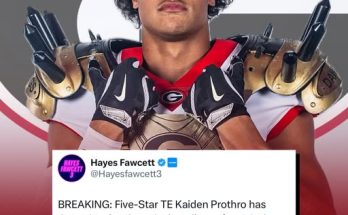This summer, two dynamic NFL franchises, the Detroit Lions and the Miami Dolphins, will come together for a unique joint training camp experience. This marks a rare opportunity for two teams to combine forces during the offseason, sharing facilities, strategies, and competition in a way that could set a new standard for preparation in the league.
This collaboration is more than just an offseason curiosity — it has significant implications for player development, team chemistry, and fan engagement. In this article, we’ll dive deep into the details of the Lions-Dolphins joint practice sessions, the benefits such joint practices bring to NFL teams, the historical context of joint training camps, and what this means for both teams heading into the 2025 NFL season.
Background: Why Are the Lions and Dolphins Practicing Together?
Joint training camp practices between NFL teams are uncommon but not unprecedented. The NFL offseason typically involves individual team workouts, minicamps, and organized team activities (OTAs). However, NFL teams occasionally schedule joint practices during training camp, especially during the preseason, to simulate game-like competition and gain an edge through exposure to a different opponent’s playing style.
For the Lions and Dolphins, this summer’s joint practice sessions come after a shared interest in elevating their competitive edge. Both franchises are on trajectories aiming for playoff contention — the Miami Dolphins have been quietly building a young, exciting roster around their star quarterback and a revitalized coaching staff, while the Detroit Lions have been steadily improving under their head coach’s system and drafting strategy.
The decision to hold joint practices was influenced by several factors:
- Proximity and Facilities: Both teams will be training in Florida this summer, making logistics manageable. The Lions have been utilizing Florida facilities for offseason work, and Miami’s permanent base is in the same state, facilitating easy coordination.
- Mutual Competitive Benefit: Practicing against a strong opponent helps simulate game intensity more effectively than intra-squad drills. Both teams benefit from seeing different looks and defensive/offensive schemes.
- Player Development: Young players and rookies on both rosters can gauge their abilities against outside competition, which is crucial for evaluation.
- Building Camaraderie: NFL coaches often stress that joint practices foster camaraderie and respect between teams, reducing injuries and promoting sportsmanship.
The History of Joint NFL Practices
While not common, joint practices have a history in the NFL, especially as teams look for creative ways to prepare for the regular season.
- Preseason Joint Practices: Teams will often arrange joint practices during the preseason before they meet in exhibition games. These sessions give coaches a chance to scout opponents, refine game plans, and see players in competitive environments.
- Training Camp Collaborations: Occasionally, teams will train together for an extended period during training camp, especially when they share training facilities or geographical proximity.
- Notable Examples: The Dallas Cowboys and Houston Texans have practiced together in the past, as have the New England Patriots and Buffalo Bills. These sessions often draw media attention and fan interest.
The Lions-Dolphins joint practice continues this trend but with a few modern twists — advanced technology integration, analytics sharing, and increased media engagement.
What the Lions and Dolphins Hope to Gain
Both teams have clear objectives for these joint practice sessions.
1. Realistic Competition
One of the most significant advantages is the chance for players to compete against an outside team with different schemes and players. This helps avoid the predictability of intra-squad drills.
- For the Lions: Facing the Dolphins’ fast-paced offense and aggressive defense will test their linebackers and secondary, revealing strengths and weaknesses.
- For the Dolphins: The Lions’ balanced offensive attack and physical style will provide Miami’s defense with a challenging look, helping them prepare for a variety of opponents.
2. Player Development
Rookies and second-year players benefit immensely by facing real NFL opponents outside their own team.
- Quarterbacks: This will be a vital test for both teams’ signal-callers, who will face different defensive looks.
- Young Defensive Backs: They will learn to adjust on the fly against unfamiliar receivers.
- Special Teams Units: These often-neglected units can practice real game situations like kick coverage and returns.
3. Coaching Insights
Coaches from both sides can analyze opponent tendencies, scouting new talent, and identify scheme adjustments needed before the regular season.
- Collaboration: Defensive coordinators and offensive coaches can exchange ideas and strategies to elevate their respective teams.
4. Injury Prevention and Conditioning
Joint practices are generally intense but controlled, allowing players to push their limits under medical supervision.
- Conditioning: Teams can gauge player stamina and readiness.
- Medical Staff Coordination: Both teams will have trainers present to monitor and prevent injuries.
What Fans Can Expect
Fans of both franchises are eagerly anticipating this rare collaborative training camp event.
1. Behind-the-Scenes Content
Teams will likely provide exclusive access to fans, including:
- Practice footage
- Player interviews
- Coach analysis
Social media campaigns will spotlight key moments, increasing fan engagement.
2. Media Attention
The media will be on hand to cover the unique dynamics of this joint practice, from how players respond to unfamiliar competition to the new strategies tested.
3. Ticketed Practice Sessions
There may be opportunities for fans to attend some practice sessions live, providing a rare chance to see players up close in a competitive setting.
4. Increased Rivalry and Respect
The Lions and Dolphins don’t have a historic rivalry, but practicing together could spark competitive fire and respect that may impact future matchups.
Potential Challenges and How They Are Addressed
While joint practices bring many benefits, there are challenges to overcome.
1. Injury Risk
Playing hard against unfamiliar opponents can increase injury risk. Both teams will mitigate this by:
- Controlling the intensity of contact drills
- Ensuring medical staff are on high alert
- Limiting the duration of joint sessions
2. Competitive Secrets
Teams may be reluctant to reveal their full playbook or strategy. To address this:
- Coaches will focus on fundamentals and situational drills rather than full-scheme exposure.
- Teams might hold some scrimmages privately.
3. Logistical Coordination
Scheduling and facility sharing require precise planning.
- The Lions and Dolphins have coordinated practice times and facility use to avoid overlap.
- Transportation and lodging have been arranged to ensure minimal disruption.
Looking Ahead: Impact on the 2025 NFL Season
This summer’s joint practice is more than a training opportunity — it is a strategic move to jumpstart each team’s season.
For the Detroit Lions
- The Lions are aiming to break through to playoff contention after steady improvements.
- Facing the Dolphins’ unique offensive style in practice will prepare the Lions’ defense for a variety of NFL offenses.
- Young players will have a better gauge on their roles, increasing overall team depth.
For the Miami Dolphins
- The Dolphins want to build on their recent successes with a sharper, more adaptable defense.
- Their offense will gain valuable reps against a physical, disciplined Lions defense.
- Coaches will use insights from the joint practices to finalize their game plans.
Fans and the NFL Community React
Social media buzz has already begun around this joint practice, with fans and analysts weighing in.
- Some praise the innovation and competitive spirit.
- Others are curious how this might influence future offseason collaboration across the league.
- Analysts highlight that such practices could become more common as teams seek competitive advantages.



